Recent Articles
Popular Makes
Body Types
2017 GMC Acadia: Pros and Cons
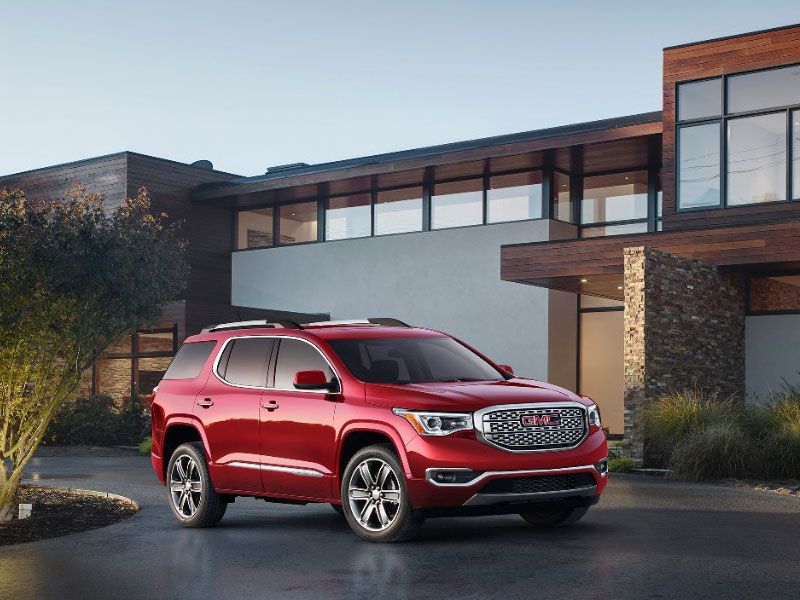
2017 GMC Acadia frontangle ・ Photo by General Motors
GM introduced its three-row crossover lineup in 2006, just before the auto industry got torpedoed by the credit crisis that led into the Great Recession. Four versions hit the showrooms: The 2007 GMC Acadia, followed by the 2007 Buick Enclave, the 2007 Saturn Outlook, and finally the 2008 Chevrolet Traverse. The 2017 GMC Acadia benefits from a complete exterior and interior makeover this year, the first major attention that GM's three-row crossover has received since its debut. The Acadia comes in six trim levels: SL (starting at $29,995) SLE-1 ($35,375); SLE-2 ($35,995); SLT-1 ($39,275); SLT-2 ($42,675); and Denali ($45,845). Add about $2000 for AWD.
Here are some pros and cons for buyers considering a 2017 GMC Acadia.
Pro: Three Rows of Seating
The 2017 GMC Acadia comes with three rows of seating as standard equipment. A pair of captain’s seats are the default choice in the second row, but a 60/40 split-folding bench seat can be selected as a no-cost option, increasing total seating capacity from 7 to 8 passengers. Wide doors and easy fold and slide second-row seats make getting into the back seat a minimal chore. Thanks to the space freed up by unibody construction and independent rear suspension, the third row is actually quite comfortable and roomy—far superior to the torture seats in GM’s fullsize SUVs. Legroom is up to 31.1 inches, while headroom is up to 37.2 inches.
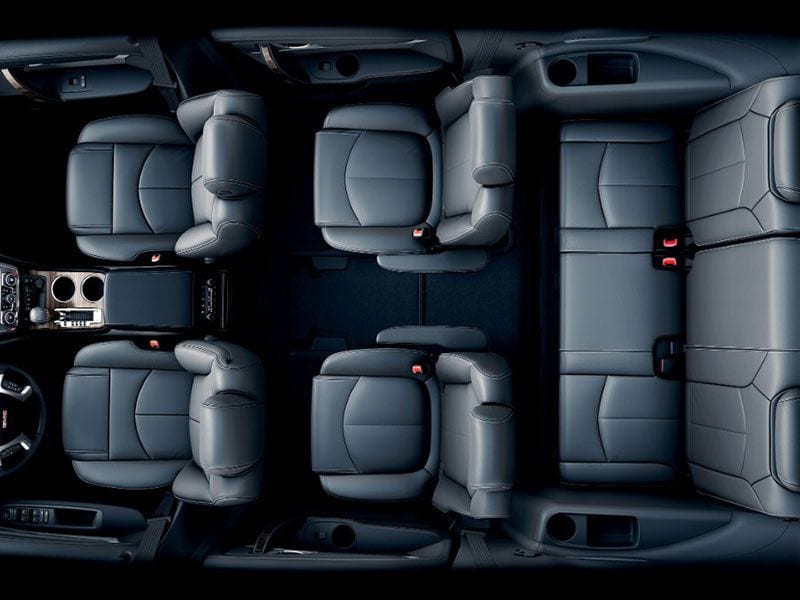
Photo by General Motors
Pro: Connectivity
A three-row crossover can be like an extension of the family living room. To serve the modern family properly, it needs to be connected, and the Acadia is. USB connections are standard for compatible device charging in all three rows. Those devices can use the Acadia’s Wi-Fi hotspot to share the OnStar 4G with LTE connection. A 3-month/3-GB trial data plan is included to get you started. The GMC IntelliLink system aids in managing all of the connections. There’s no rear-seat entertainment system available, but hand out the tablet computers and headphones, and everyone will be happy—and quiet—during your drives.

Photo by General Motors
Pro: All Terrain Package
New for 2017, the Acadia AWD SLE and SLT models can be ordered with an All Terrain Package (the Denali AWD comes with the package standard). This feature replaces the “Off-Road” setting in the drive mode selector for true dirt driving and enhanced hill climbing capability. The system comes with an Active Twin Clutch, “which optimizes traction for every condition it encounters,” according to GM. All Terrain models get black chrome trim, a body-color grille, and unique wheels. They also sacrifice the third-row seats for storage bins and cargo management, and come with a split bench seat in place of the second-row captain’s chairs.
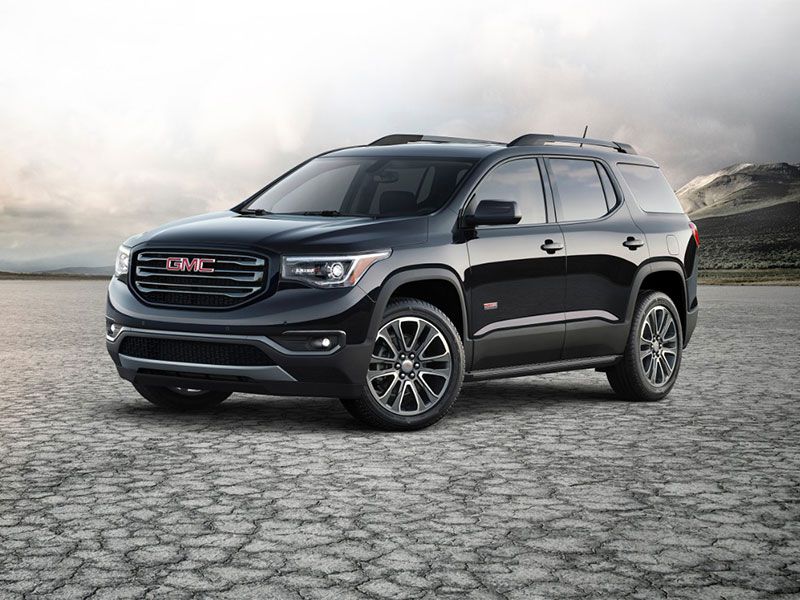
Photo by General Motors
Pro: Safety
The 2017 GMC Acadia comes with a good set of standard safety features, as well as a comprehensive range of one that are available. Eight air bags are standard, along with a rearview camera, Stabilitrak electronic stability control, and LATCH connectors. Tick a few boxes, and you get optional active safety features like forward collision alert, lane departure warning, blind-spot alert, front pedestrian braking, forward automatic braking, low speed forward automatic braking, following distance indicator, rear park assist, automatic high-beam control, surround vision camera, rear cross-traffic alert and the new rear-seat reminder feature. The Insurance Institute for Highway Safety and SaferCar.gov have not yet rated the 2017 GMC Acadia.
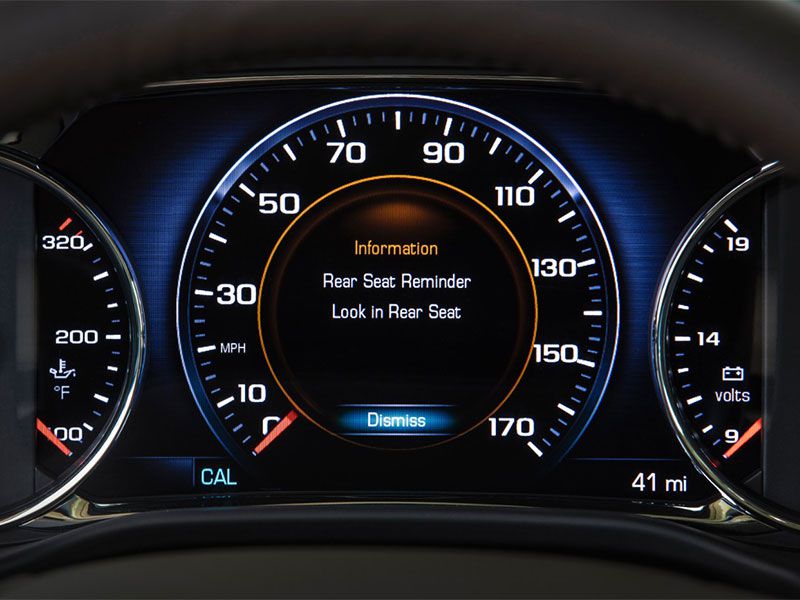
Photo by General Motors
Pro: New Exterior Design and Reduced Overall Weight
Whether from familiarity or due to changing tastes, the first generation Acadia design now looks a little flabby and dated. GMC didn’t throw the baby out with the bath water, but it did put the baby on a diet and exercise regimen. The 2017 Acadia came out with a newly chiseled and muscular look, and had lost nearly 700 lb in the process. Better looks are nice, but reduced weight is even better. The Acadia now handles better and operates more efficiently than before. With less weight, the brakes can haul the vehicle down from speed in shorter distances. Tires last longer, and the vehicle has less impact on roadways and on your driveway. Weight loss is a major pro.

Photo by GMC
Con: Towing
One of the reasons you might buy an SUV instead of a sedan is for towing capacity. If you choose an Acadia with a 4-cylinder engine, your tow rating tops out at 1000 lb., which severely curtails your towing options. If you step up to the V6 engine, the tow rating is a more generous 4000 lb.—much more usable, but still far below GMC’s body-on-frame SUV capacities. By contrast, a 2017 GMC Yukon with the base 5.3-liter V8 engine and rear-wheel drive (starting at $48,315) can tow up to 7100 lb. Among competitors, when properly equipped, the Honda Pilot can tow up to 5000 lb. and so can the Toyota Highlander, while the Dodge Durango is rated to tow up to 7500 lb.
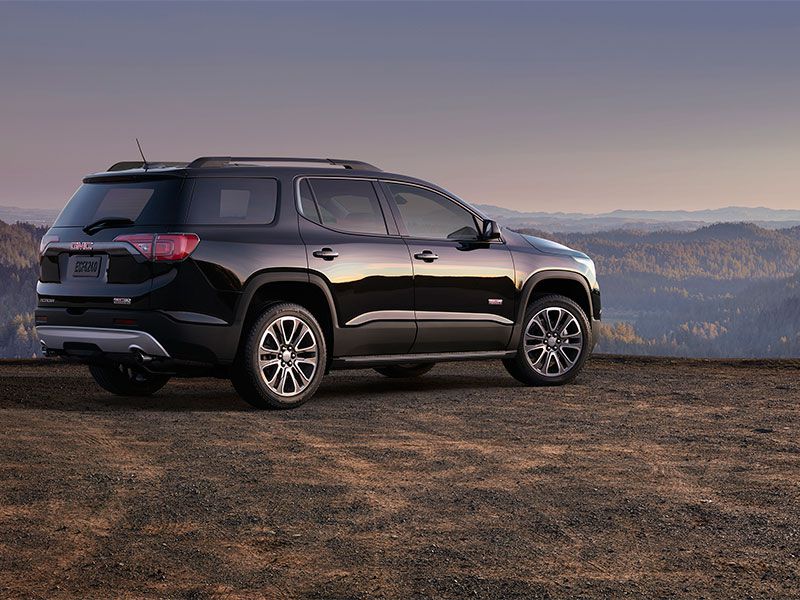
Photo by General Motors
Con: Electric-Assist Power Steering
Engineers love electric-assist power steering systems. They use less energy than hydraulic power steering systems. They weigh less, and require less maintenance—there are no drive belts or power steering fluid to keep an eye on. So why is electric-assist power steering listed as a con here? Because even as advanced as the Acadia system is, it still doesn’t deliver the same feel and handling as a good hydraulic system can. Electric-assist power steering is often described as “numb,” and that’s a real negative during spirited driving, especially when cornering. Steering effort is engineered and controlled by software, not by actual driving factors.
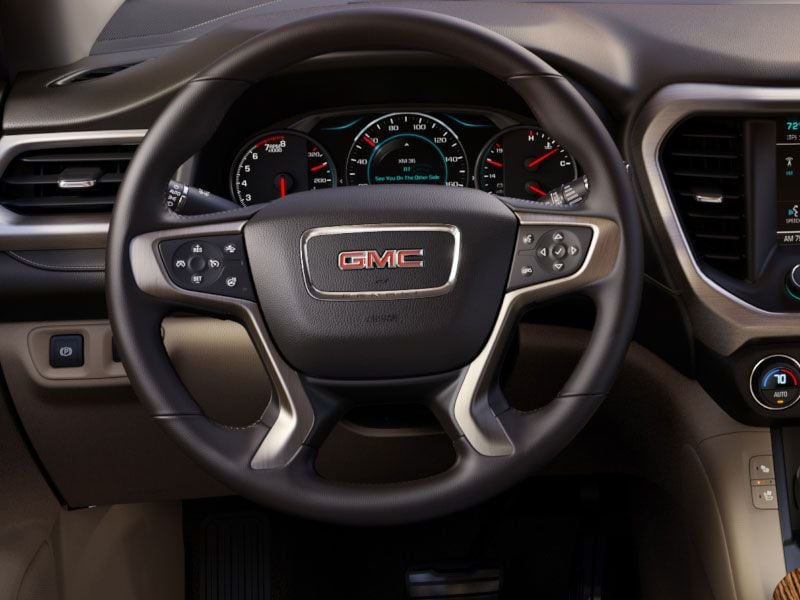
Photo by General Motors
Con: Cargo and Luggage Space
The Acadia takes up a lot of space, with a 112.5-inch wheelbase, 193.6-inch overall length and 75.4-inch width. For all that presence, it has a relatively modest amount of luggage and cargo space. With seven or eight people aboard, the 12.8-cubic feet of luggage room behind the third row fills up quickly, which amplifies the challenge of Acadia’s limited towing capacity. Fold the third row flat, and 41.7 cubic feet of cargo space becomes available, with a flat load floor. If you choose the seven-passenger setup with second-row captain’s chairs, you have to be careful with cargo overhanging the space between the seats. Transporting pets safely will require a pet barrier or crates, a mild inconvenience.
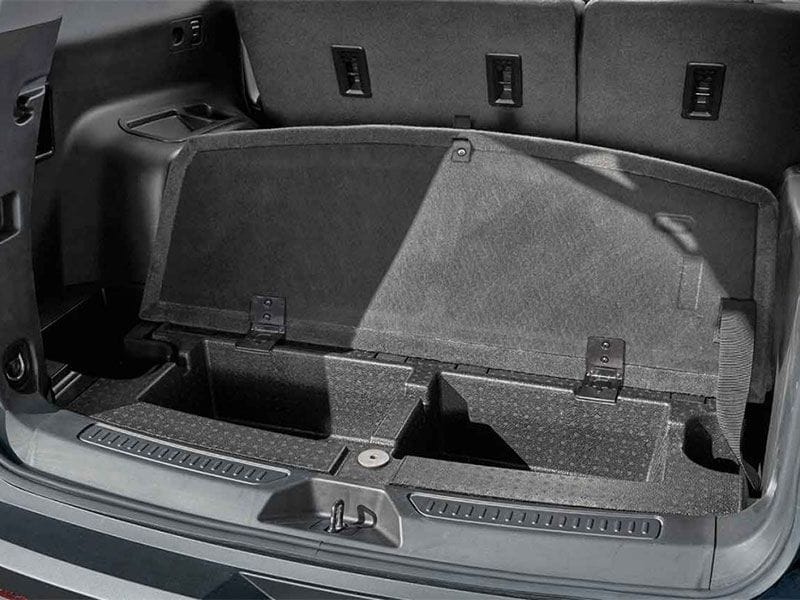
Photo by General Motors
Con: Pricing
If you’re looking for a bargain on an SUV, you may need to sacrifice many of the cool features that are available on the upper trim levels of Acadia, including the very desirable active safety options. The top-of-the-line Acadia Denali AWD starts at $48,240, and checking all of the boxes to include the Tech Package, Rear Seat Entertainment System, continuously variable real time damping, Dual SkyScape 2-panel power sunroof, and other features can push the price up into the upper $50s, rarified air for a family hauler of this sort.
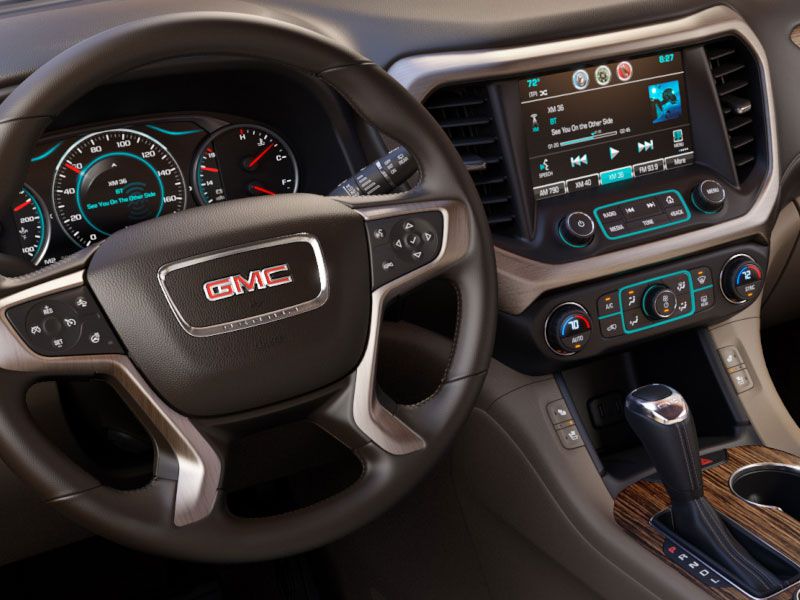
Photo by General Motors
How We Really Feel
The 2017 GMC Acadia competes with the Toyota Highlander, Honda Pilot, Dodge Journey, Ford Flex, among other three-row crossover vehicles. The pros of the Acadia outweigh the cons, but that's true of most competitors. GMC loyalists looking to replace an older Acadia will find enough new content to justify the purchase. Yukon owners looking for a more efficient vehicle that can still carry seven or eight passengers will appreciate Acadia’s smart interior, and Terrain owners with growing families can step up to Acadia without changing brands. The middle of the lineup (SLE-2, SLT-1) seems to be the sweet spot, where a decent level of standard equipment and carefully selected options will deliver a 2017 GMC Acadia that is attractively priced, nicely equipped, and very capable.
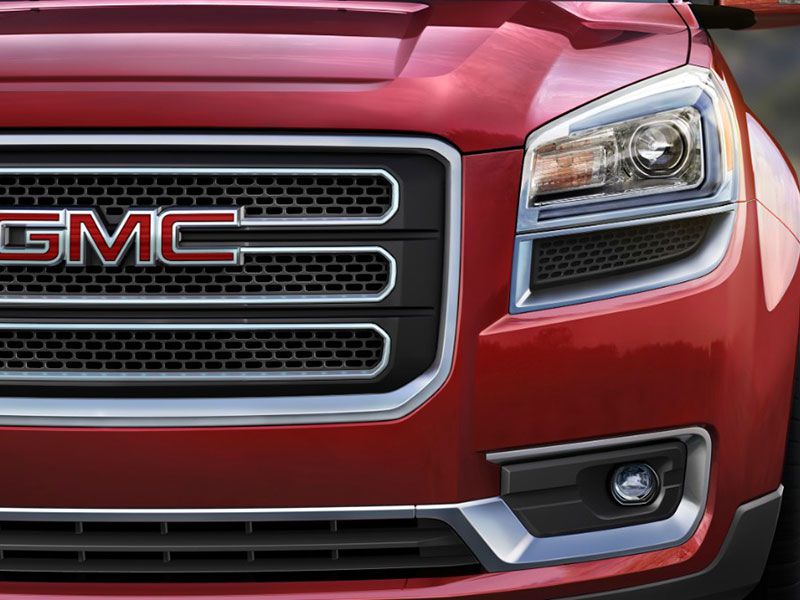
Photo by General Motors